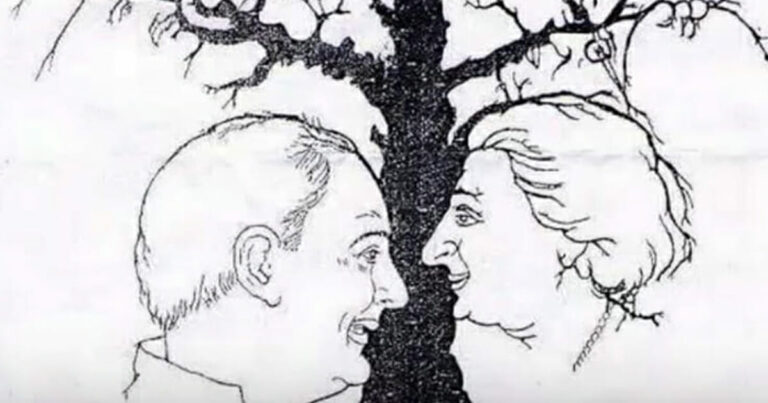Aviation Experts Reviewing Air India Footage Say What Might Have Led to the Fatal Crash

In addition to experts divulging their opinions on what could have led to the deadly Air India plane crash, reports have disclosed the final words uttered by the leading pilot.
Video footage of Air India Flight 171 has raised serious questions among aviation experts, with former British Airways pilot Alastair Rosenschein pointing out anomalies in the aircraft’s configuration just before it crashed.

A still image of the explosion that ensued after the Air India plane crash, posted in 2025. | Source: YouTube/@CNN
After reviewing the video, Rosenschein noted that the plane’s landing gear was visibly down during takeoff — something he described as “not correct,” as the gear should typically be retracted once the plane becomes airborne.
While he acknowledged that the footage is not crystal clear, he remarked that it appeared the aircraft did not have its proper take-off flap setting either.

Air India Flight 171 descending right before it crashed. | Source: YouTube/@CNN
Rosenschein further explained the critical role wing flaps play during takeoff. These flaps extend the wing’s surface area, helping generate extra lift at slower speeds and allowing the aircraft to climb effectively. Without the correct flap configuration, he said, it’s possible the aircraft would have struggled to maintain flight.
He suggested, albeit speculatively, that this misconfiguration “could explain why the aircraft came down,” reinforcing the idea that improper flap settings might have played a part in the tragedy.
Observations from the footage also indicated that the aircraft seemed to be descending rather than climbing during what should have been its ascent. “It does look like it’s an aerodynamic issue because of not having the right flaps [sic] setting on take-off,” asserted Rosenschein.
Rosenschein’s concerns were echoed by Mr. Petchenik, another aviation expert who reviewed the video. He said that the crash may have stemmed from “a flap issue,” although he, too, admitted that the footage was of poor quality.
He also remarked that the aircraft’s landing gear “stayed down a bit longer than is usual,” although he acknowledged that there could be various explanations for that observation.
Aside from Petchenik’s assertions regarding the landing gear, Rosenschein expressed confusion over why the gear appeared to remain down, speculating that a hydraulic failure could have been involved, as the aircraft’s hydraulics is what typically raises the gear. Still, he was clear that this was only speculation.
Despite these early assessments from seasoned professionals, Rosenschein stressed that a full understanding of the incident would only come after investigators analyze data from the aircraft’s black boxes.
He stated that while accident investigators will review all available video evidence, the “vast majority of their information” will ultimately come from those critical onboard devices.
Aviation analyst Miles O’Brien also weighed in on the crash of Flight 171 during an interview with CNN. O’Brien described the takeoff as routine by all visible measures but quickly pointed out a critical detail that seemed off — the aircraft didn’t appear to have its wing flaps set at the five or ten degree angle typically used for takeoff, depending on the conditions.

Miles O’Brien giving his take on what may have caused the Air India plane crash. | Source: YouTube/@CNN
Initially, O’Brien considered whether the incident could have been caused by a bird strike resulting in a dual engine failure, a rare but possible scenario in aviation. However, he noted the absence of any visible birds or signs of engine flame-out in the footage.
The general electric engines showed no evidence of catastrophic failure, which made that theory increasingly unlikely. Ultimately, O’Brien circled back to the aircraft’s configuration at takeoff.
He stressed that it appeared the plane may have launched without the proper setup. What made this particularly troubling, he explained, is that modern aircraft are equipped with numerous systems, checks, and warnings designed to alert the flight crew if something isn’t set correctly.
The aviation experts’ reflections come at the same time reports unveiled the final words uttered by the leading pilot before the devastating crash in Ahmedabad. The aircraft had only been airborne for 11 seconds when it encountered a critical failure.
What should have been a standard ascent quickly escalated into chaos as the situation, in the words of a news outlet’s report, “suddenly became an irrecoverable disaster.”
Captain Sumeet Sabharwal, leading the flight, radioed a chilling emergency message to ground control — “Mayday… no thrust, losing power, unable to lift!” Over the following 19 seconds, the Boeing 787 Dreamliner began losing altitude, drifting to the ground before smashing into buildings.
The crash claimed the lives of nearly everyone on board and inflicted casualties on the ground, as stunned air traffic controllers could do nothing but watch.
Authorities have launched an investigation into the incident, though officials warn that answers may take months. Among the possible causes being considered are bird strikes and mechanical failure.
As investigations continue into the catastrophic crash, authorities have now released the names and photographs of several crew members involved in the disaster, including the flight’s pilots and cabin crew.
Accompanying Captain Sabharwal, a seasoned aviator who joined Air India in 1994, in the cockpit was First Officer Clive Kunder. Hailing from Mumbai, Kunder had logged 1,100 hours in the air and was a graduate of the Paris Air Flight School in Florida, according to local reports.
Among the cabin crew confirmed to have been on board were Nganthoi Sharma Kongbrailatpam and Lamnunthem Singson.
Additional senior crew members have also been named, including Shradha Dhavan, Aparna Mahadik, and Saineeta Chakravarti, as well as Deepak Pathak, Maithili Patil, Irfan Shaikh, Roshni Songhare Rajendra, and Manisha Thapa.
As the airline community, families, and the broader public mourn the tragic loss of life and await the outcome of an extensive investigation into what led to the aircraft’s abrupt descent so soon after takeoff, a heartbreaking revelation has emerged about Captain Sabharwal.
Just days before the crash, the late pilot had made a tender promise to his 82-year-old father, a former Directorate General of Civil Aviation (DGCA) official who lives in Powai, Mumbai.

MLA Dilip Mama Lande meeting with Captain Sumeet Sabharwal’s father, posted on June 13, 2025. | Source: YouTube/India Today
According to local MLA Dilip Mama Lande, “A few days ago, he promised to take a break to spend time with his father.” Lande shared this after meeting with grieving family members.
Sadly, that heartfelt commitment was never fulfilled. Sabharwal perished in the crash minutes after takeoff from Ahmedabad airport. The tragedy has hit Mumbai especially hard. Nine of the crew members on board the flight were also based out of the city.

MLA Dilip Mama Lande speaking to reporters about the tragedy. | Source: YouTube/India Today
Their families, expecting a call from London, instead received devastating news that their loved ones were gone far too soon.
As the heartbreaking story of Air India Flight 171 continues to unfold, media outlets across the globe — among them the BBC — have been publishing continuous updates, piecing together the lives affected by the tragedy and the legacy left behind by those onboard. Among the most poignant revelations shared is about Captain Sabharwal, who was on the verge of a well-earned retirement.
According to The Indian Express newspaper, the 60-year-old pilot was just months away from stepping down after decades of service in the skies.
Captain Sabharwal held the prestigious role of Line Training Captain (LTC), a title reserved for the most accomplished pilots entrusted with guiding and evaluating younger crew members.

MLA Dilip Mama Lande and others comforting Captain Sumeet Sabharwal’s father. | Source: YouTube/India Today
A neighbor in his Mumbai residence recalled him as a man of quiet discipline. “He was very reserved, disciplined. We used to see him come and go in uniform often, but he was a very reserved person,” they divulged.
In the wake of the tragedy, these updates from credible news outlets have underscored the depth of the loss felt across the aviation community and beyond.
At this time, we wish to extend our most heartfelt condolences to Captain Sabharwal’s father, his other family members and friends, the families and loved ones of all the crew and passengers on board, and those who lost loved ones on the ground. We hope for their healing as they grieve. RIP, to all the lives lost.





